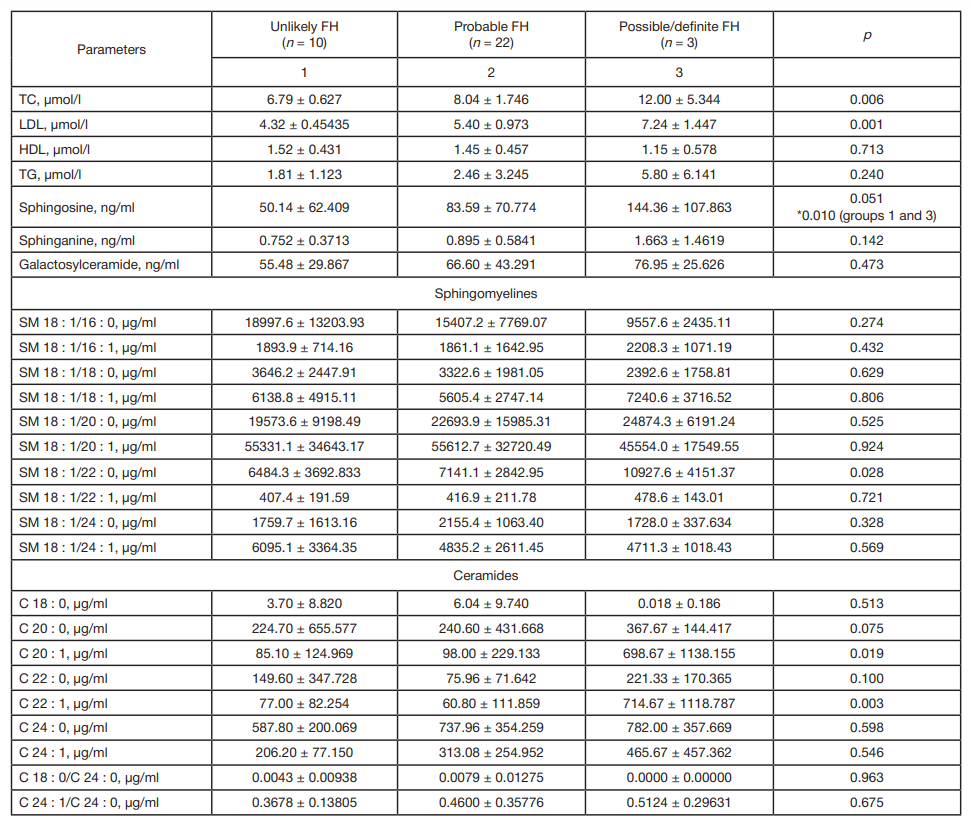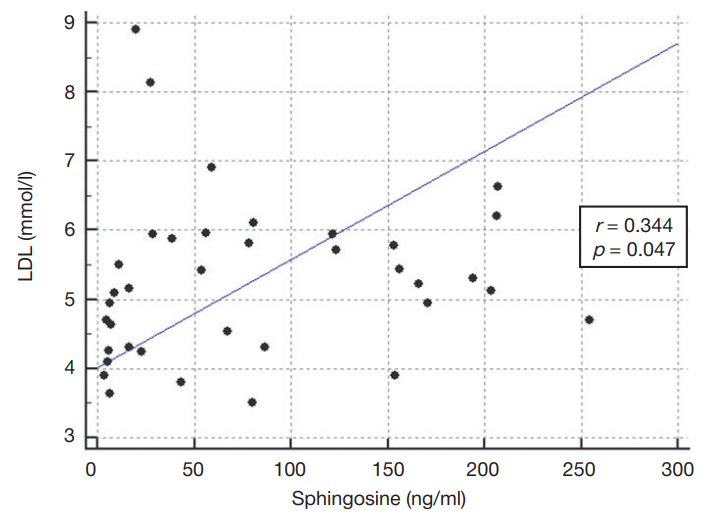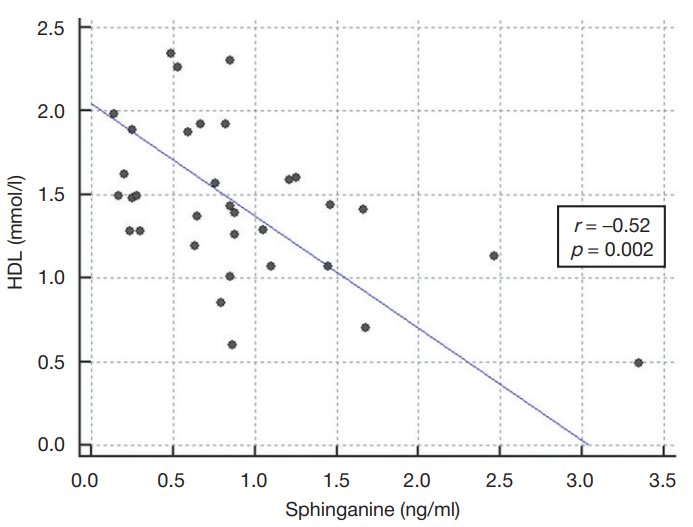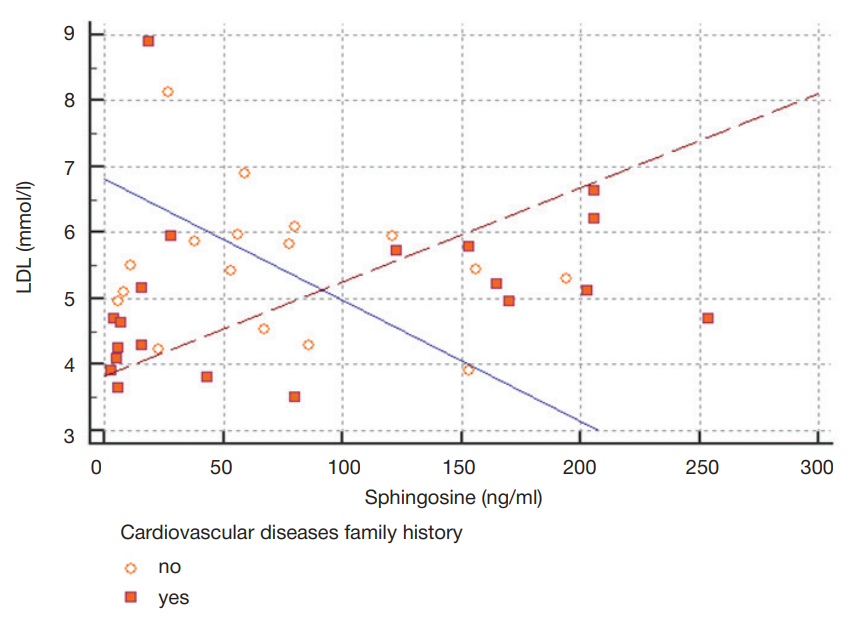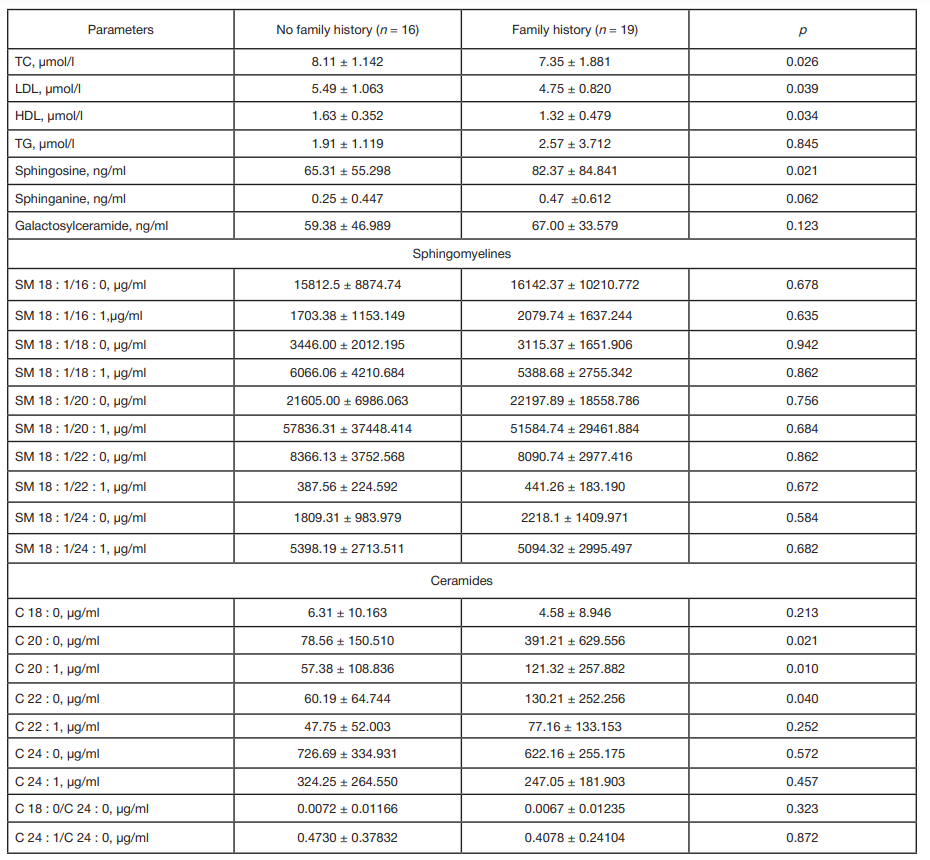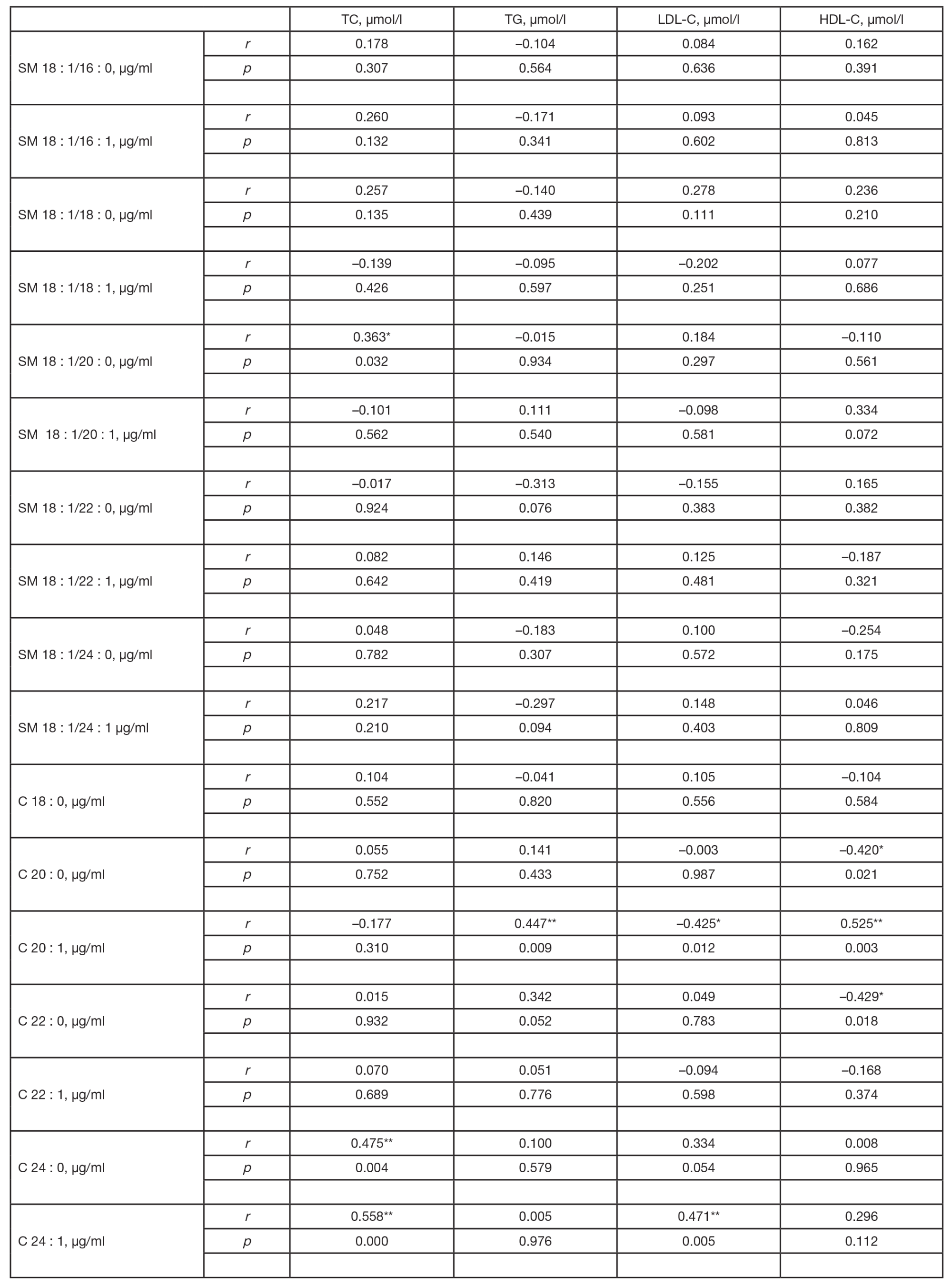
ORIGINAL RESEARCH
Lipidome features in patients with different probability of family hypercholesterolemia
1 Central State Medical Academy of the Department of Presidential Affairs of the Russian Federation, Moscow, Russia
2 City Clinical Hospital № 51, Moscow, Russia
3 Emanuel Institute of Biochemical Physics of the Russian Academy of Sciences, Moscow, Russia
4 Lomonosov Moscow State University, Moscow, Russia
Correspondence should be addressed: Larisa O. Minushkina
Filevsky Boulevard, 36–19, Moscow, 121601; ur.liam@anikhsunim
Funding: RFBR grant 19-04-00870А Sphingolipidome Analysis of Cardiovascular Diseases’ Markers.
Author contribution: Rogozhina AA — sampling, data acquisition; Minushkina LO — data analysis, text writing; Zateyshchikov DA — planning, data analysis, manuscript writing; Alessenko AV — project manager; Gutner UA, Shupik MA, Maloshitskaya OA and Sokolov SA — sample preparation, laboratory analysis, data analysis; Kurochkin IN — data analysis.
